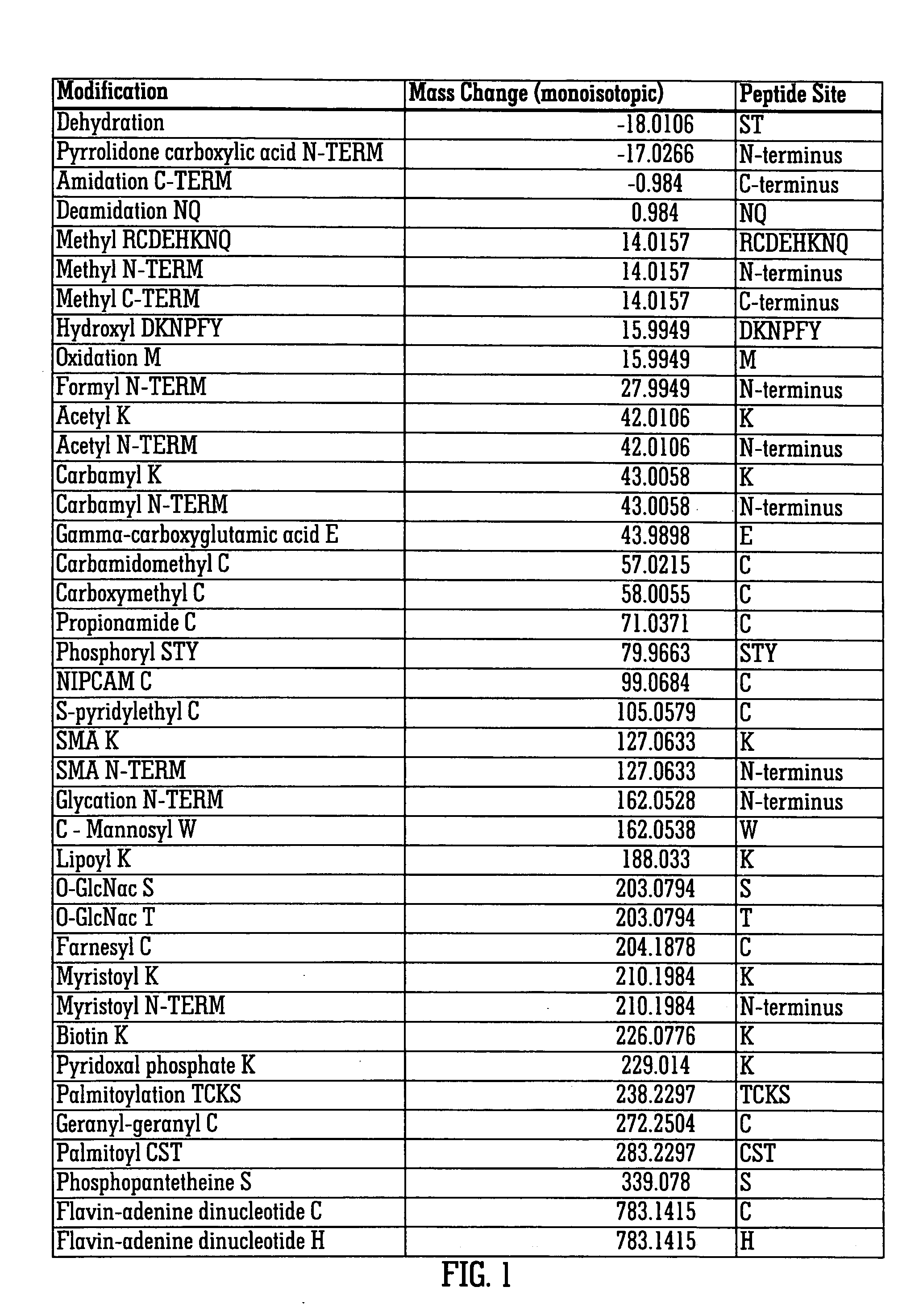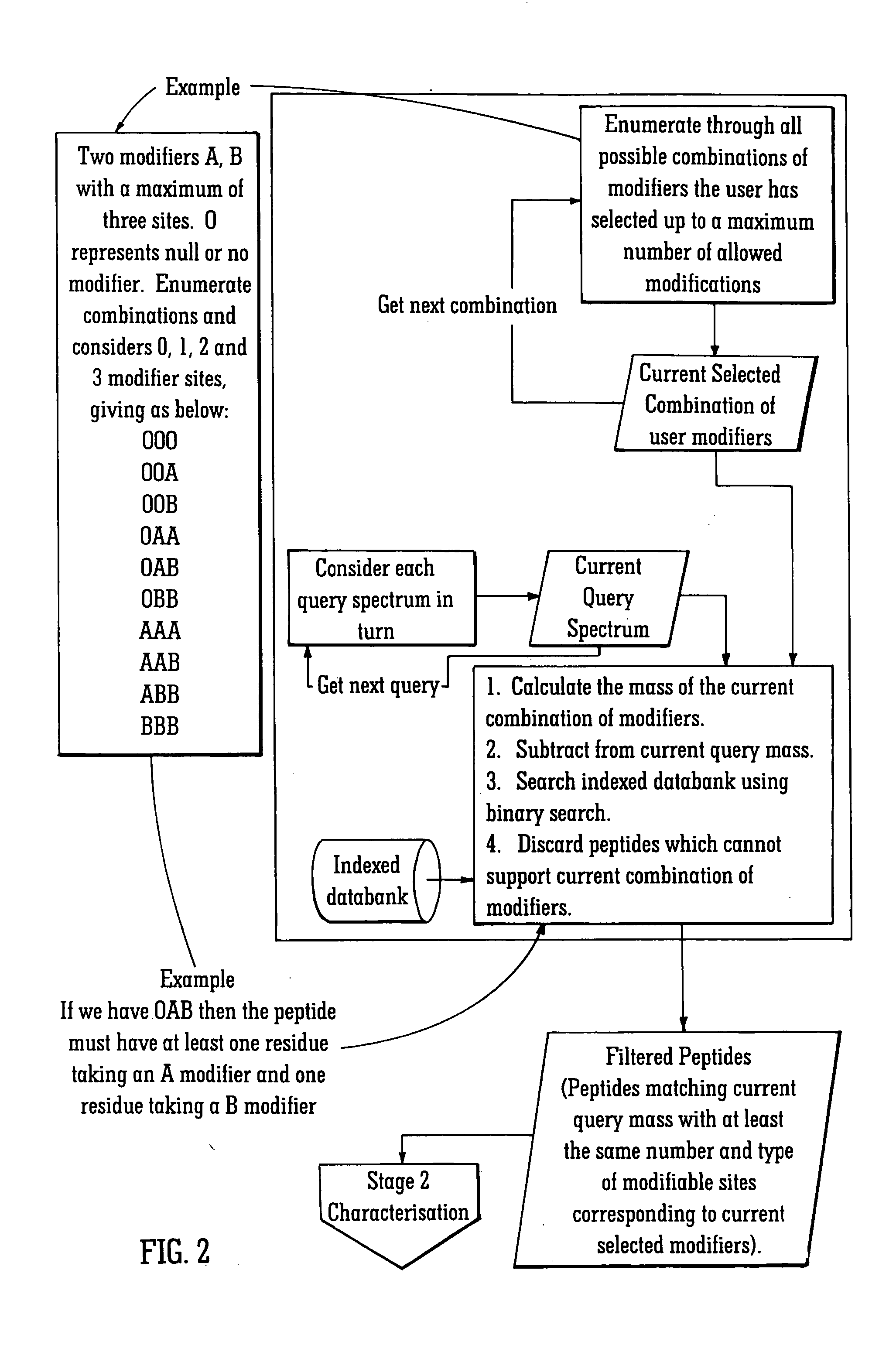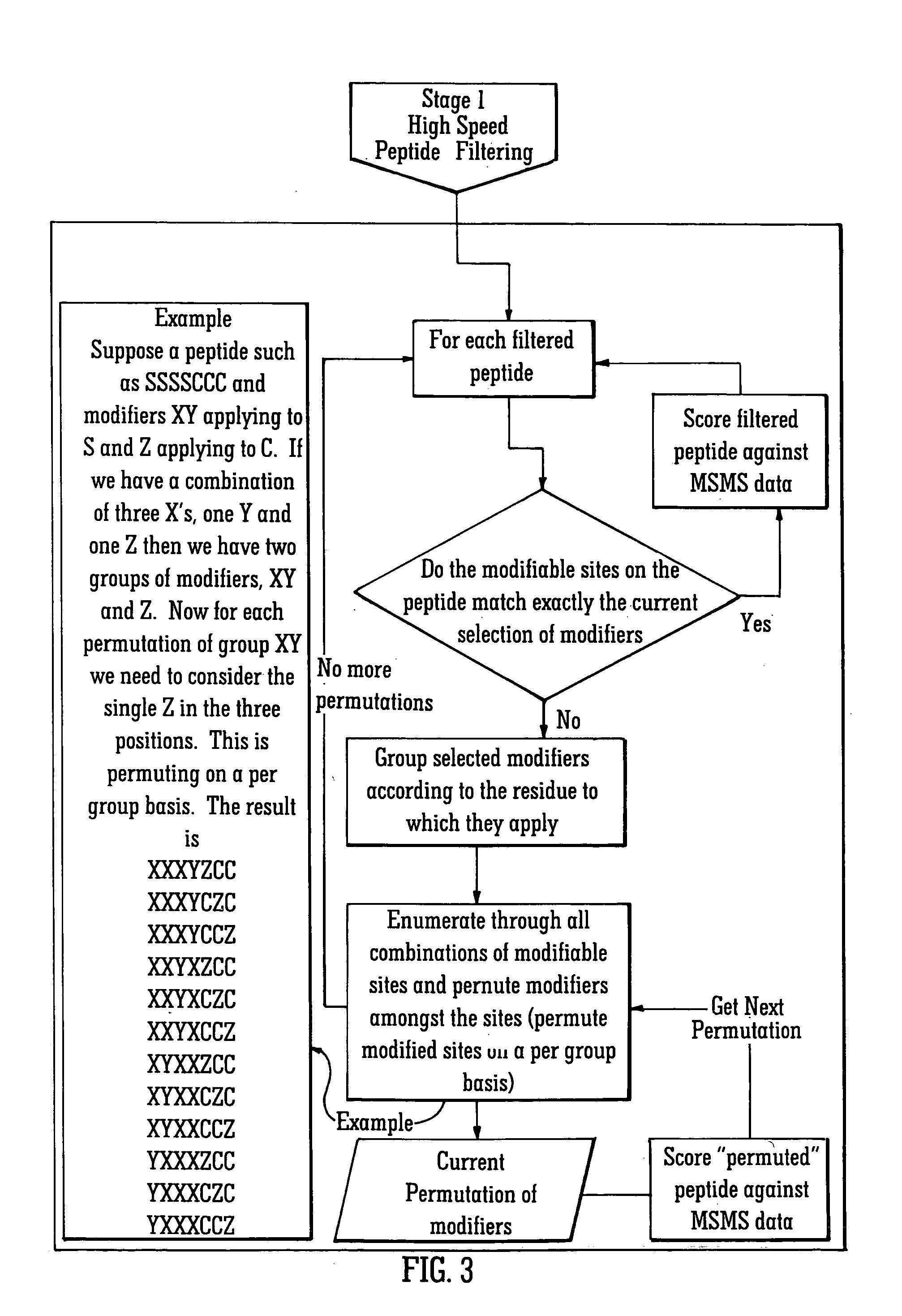Method of mass spectrometry
- Summary
- Abstract
- Description
- Claims
- Application Information
AI Technical Summary
Benefits of technology
Problems solved by technology
Method used
Image
Examples
Example
DETAILED DESCRIPTION OF THE DRAWINGS
[0080] The rapid identification of proteins using mass spectral data and protein databanks is now a standard technique in proteomics work. As this area of research has developed, the ability to characterise proteins and in particular the ability to determine the presence and location of any post-translational modifications to the protein has become increasingly important. The preferred embodiment relates to a method of identifying post-translationally modified proteins more quickly than conventional techniques.
[0081]FIG. 1 shows a list of post-translational modifications which may affect a protein and the peptide sites or residues to which such modifications apply. The figure also shows the resulting change (normally increase) in mass to the protein caused by the modification.
[0082] It is known to subject peptides derived from digesting a protein to fragmentation in a collision of fragmentation cell of a mass spectrometer. The resulting fragmen...
PUM
| Property | Measurement | Unit |
|---|---|---|
| Mass | aaaaa | aaaaa |
| Mass | aaaaa | aaaaa |
| Mass | aaaaa | aaaaa |
Abstract
Description
Claims
Application Information
 Login to View More
Login to View More - R&D
- Intellectual Property
- Life Sciences
- Materials
- Tech Scout
- Unparalleled Data Quality
- Higher Quality Content
- 60% Fewer Hallucinations
Browse by: Latest US Patents, China's latest patents, Technical Efficacy Thesaurus, Application Domain, Technology Topic, Popular Technical Reports.
© 2025 PatSnap. All rights reserved.Legal|Privacy policy|Modern Slavery Act Transparency Statement|Sitemap|About US| Contact US: help@patsnap.com



